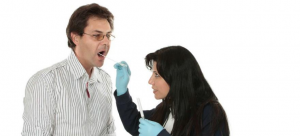新型コロナウイルス肺炎の臨床検査技術ガイド
2020-07-17
新型コロナウイルス肺炎の臨床検査技術ガイド
二月に 21, 国家衛生健康委員会が新型コロナウイルス肺炎の予防・管理計画を発表 (第5版), そして付録として, 新型コロナウイルス感染症肺炎臨床検査技術ガイドラインを公表 (第5版).
新型コロナウイルス肺炎の臨床検査技術ガイド
すべてのレベルおよびその他の関連する機関の疾病管理部門を導くために、新しいコロナウイルス肺炎の実験室検査を実施する, この技術ガイドは特別に策定されています.
1. 標本の収集と処理
1. 鼻咽頭スワブ: サンプラーは、収集されている人の頭を優しくサポートします, スワブを片手に保持します, スワブは鼻孔に取り付けられています, そして、下部鼻管の底に沿ってゆっくりと後方に深くなります. トラウマからの出血を避けるために激しい. 綿棒の先端が鼻咽頭腔の後壁に到達すると, 1週間静かに回転させます (反射咳の場合, しばらくの間留まるべきです), その後、ゆっくりとスワブを取り出します, swabヘッドを含む保存ソリューションに浸す 2 に 3 ウイルスのml (また、使用可能な等張生理食塩水溶液を使用します, 組織培養溶液またはリン酸緩衝液溶液), 尻尾を捨てる, キャップを締めます.
2. 咽頭スワブ: 収集された人は、生理学的生理食塩水で最初につがみます, サンプリング担当者は綿棒を滅菌正常生理食塩水に入れて湿らせます (抗生物質によって引き起こされるアレルギーを避けるために、スワブをウイルス保存ソリューションに入れることは禁じられています), 収集された人の頭はわずかに傾いた, 口が広がった, と “ああ” 音, 両側に咽頭扁桃腺を露出させます, 舌の基部の上の綿棒, そして、少なくとも少なくとも少し硬い往復で被験者の両側に咽頭扁桃を拭く 3 タイムズ, そして、少なくとも 3 咽頭の後ろの壁に2番目, スワブヘッドを含むチューブに浸します 2 に 3 ウイルス保存ソリューションのml (等張生理食塩水溶液, 組織培養溶液またはリン酸緩衝液溶液も使用できます), 尻尾を捨てる, キャップを締めます. 咽頭の綿棒は、鼻咽頭スワブと同じチューブに置くこともできます. 3. 鼻咽頭抽出物または呼吸器抽出物: 陰圧ポンプに接続されたコレクターを使用して、鼻咽頭から粘液または気管から気道分泌物を抽出します. コレクターヘッドを鼻腔または気管に挿入します, 負の圧力をオンにします, コレクターヘッドを回転させ、ゆっくりと終了します, 抽出された粘液を集めます, 3mlのサンプリング液でコレクターを一度すすいです (小児カテーテルを使用して、50mlシリンジの代替コレクターに接続することもできます).
4. 深いsput: 患者は、深い咳の後、3mlのサンプル溶液を含む50mlのネジプラスチックチューブに咳をかけるsputを収集する必要があります. サンプリングソリューションでsputが収集されていない場合, サンプリングソリューションの2〜3mlを追加するか、テスト前に等量のsputum消化溶液を追加します.
sputum消化液貯蔵溶液式:
使用する前, ストックソリューションをに希釈します 100 脱イオン水でML. 含まれるリン酸緩衝液 1 G/LプロテイナーゼKは、等量のsputで液化することもできます.
5. 気管支洗浄液: コレクターヘッドを気管に挿入します (深さ約30cm) 鼻孔または気管ソケットから, 5mlの生理食塩水を注入します, 負の圧力をオンにします, コレクターヘッドを回転させ、ゆっくりと撤退します. 抽出された粘液を集めて、サンプリング液で一度コレクターをすすいでください (小児カテーテルを使用して50mlシリンジに接続してコレクションを置き換えることもできます).
6. 肺胞洗浄液: 局所麻酔の後, ファイバーの気管支鏡を口または鼻から咽頭に挿入し、右中葉または左肺舌セグメントの枝に挿入します, ヒントを気管支の枝の開口部に取り付けます, 気管生検穴の塩水を通して滅菌生理学をゆっくりと追加します, 30-50毎回ML, 総額は100〜250mlです, 300mlを超えないでください.
7. 糞便標本: 1mlの標本処理ソリューションを服用します, 大豆の標本サイズを拾い、チューブに追加します, そっと吸う 3-5 タイムズ, 室温で立ってください 10 分, 8000rpmでの遠心 5 分, そして、検出のために上清を吸います.
便のサンプル処理ソリューションは自分で準備できます: 1.211 Gトリス, 8.5 G塩化ナトリウム, 1.1 G無水塩化カルシウムまたは 1.47 結晶水を含む塩化カルシウム, 溶解した 800 ML脱イオン水, pHに調整されました 7.5 濃縮塩酸を伴う , 脱イオン水で最大1000mlを構成します.
スツールの懸濁液は、ハンクの溶液または他の等張生理食塩水溶液を使用して便サンプルを溶解することで調製することもできます, 組織培養溶液またはリン酸緩衝液. 患者に下痢の症状がある場合, 離れる 3 に 5 便サンプルのml, 優しくピペットとミックス, での遠心 8000 rpm for 5 分, そして、使用するために上清を描きます.
8. 肛門綿棒: 無菌の綿棒を肛門3〜5cmに静かに挿入します, その後、そっと回転させて引き出します, すぐに3〜5mlウイルス保存ソリューションを含む15mlの外側のスクリューキャップサンプリングチューブに入れます, 尻尾を捨てる, チューブカバーを締めます.
9. Blood specimens: It is recommended to use vacuum blood vessels containing EDTA anticoagulant to collect 5ml of blood specimens. Determine the nucleic acid extraction with whole blood or plasma according to the type of nucleic acid extraction reagent selected. To separate plasma, centrifuge the whole blood at 1500-2000rpm for 10 minutes and collect the supernatant in a sterile screw-top plastic tube.
10. Serum specimen: Collect 5ml of blood specimen with vacuum negative pressure blood collection tube, let stand at room temperature for 30 分, centrifuge at 1500~2000rpm for 10 分, collect serum in sterile screw-top plastic tube.
Other materials: Collect according to design requirements.
(5) Packing of specimens
After the collection, it will be packed in the biosafety cabinet of the biosafety secondary laboratory.
1. All specimens should be placed in a sample collection tube of suitable size with a screw cap and a gasket that is resistant to freezing, and tightened. The sample number, type, name and sampling date are indicated on the outside of the container.
2. Put the sealed specimens in a sealed bag, each bag is limited to one specimen. The sample packaging requirements must meet the corresponding standards in the “Technical Rules for the Safe Transportation of Dangerous Goods by Air”.
3. For the transportation of external specimens, three-layer packaging shall be carried out according to the type of specimens and infectious substances of Class A or B.
(6) Preservation of specimens
Specimens used for virus isolation and nucleic acid testing should be tested as soon as possible. Specimens that can be detected within 24 hours can be stored at 4°C; specimens that cannot be detected within 24 hours should be stored at -70°C or below (if not- Stored at 70℃, temporarily stored in the refrigerator at -20℃). Serum can be stored at 4°C for 3 日々, and below -20°C for long-term storage. Special warehouses or counters should be set up to preserve specimens separately. Avoid repeated freezing and thawing during specimen transportation.
(7) Specimens submitted for inspection
Specimens should be sent to the laboratory as soon as possible after collection. If long-distance transportation is required, it is recommended to use dry ice and other refrigeration methods for preservation.
Negative nucleic acid test results cannot rule out new coronavirus infection. Factors that may cause false negatives need to be excluded, 含む: poor sample quality, such as respiratory samples from the oropharynx, NS。; samples collected too early or too late; not properly stored and transported And processing of samples; reasons for the existence of the technology itself, such as viral mutation, PCR inhibition, 等.
 群れのスワブメーカー
群れのスワブメーカー
















